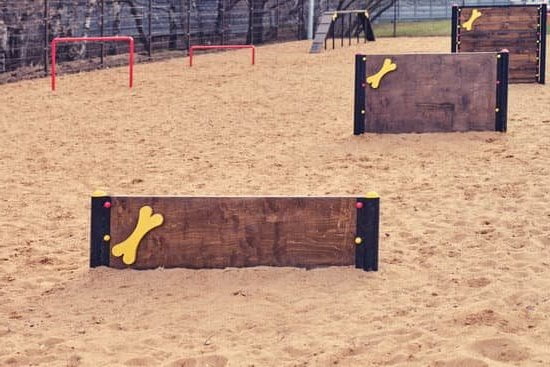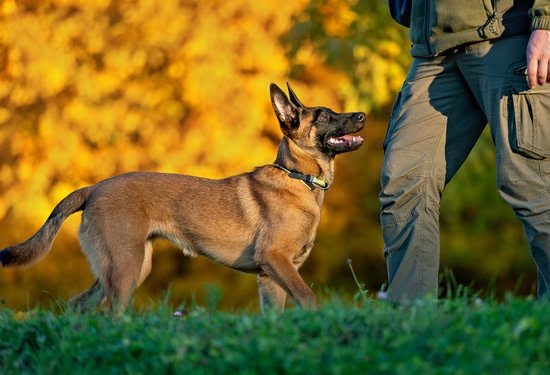Are you tired of your furry companion barking incessantly for food? In this article, we will explore how to train your dog not to bark for food. Addressing this behavior can lead to a more peaceful mealtime and a better relationship with your pet.
Barking for food is a common issue among dogs, often stemming from their natural instinct to communicate their needs. Understanding the root cause of this behavior is crucial in effectively training your dog. By identifying the triggers that lead to barking for food, you can tailor your training approach to address the specific reasons behind it.
Training your dog not to bark for food is not only about correcting a behavior but also about fostering a positive relationship based on mutual respect and understanding. Utilizing positive reinforcement techniques can be highly effective in rewarding good behavior and encouraging your dog to remain calm during meal times. Consistency in training and establishing clear boundaries are key elements in successful behavior modification.
The Importance of Training Your Dog Not to Bark for Food
Training your dog not to bark for food is an essential aspect of their overall obedience and behavior. Constant barking for food can be disruptive, annoying, and may even lead to unhealthy habits like overeating or begging. By teaching your dog to wait patiently for their meals, you are fostering good manners and self-control in them.
One of the main reasons why dogs bark for food is because they have learned that barking results in getting what they want. Whether it’s out of excitement or impatience, this behavior can be unappealing and reinforce negative habits. Through proper training, you can help your dog understand that barking is not an acceptable way to ask for food.
To start training your dog not to bark for food, you can begin by setting clear boundaries and expectations. When your dog starts barking for food, ignore their behavior and only reward them when they are calm and quiet. This teaches them that barking will not be rewarded, but waiting patiently will. Consistency is key in this training process, as reinforcing good behavior consistently will help your dog understand what is expected of them.
Identifying the Triggers
When it comes to training your dog not to bark for food, one of the crucial steps is identifying the triggers that prompt this behavior. Understanding what sets off your furry friend can help you address the issue more effectively. Here are some common triggers that may cause your dog to bark for food:
- Mealtime: Dogs are creatures of habit, and they can become quite vocal when they know it’s feeding time. If your dog starts barking as soon as you enter the kitchen or grab their food bowl, mealtime might be a trigger.
- Seeing or smelling food: Dogs have a keen sense of smell, and they can pick up on food scents from a distance. If your dog barks whenever they catch a whiff of something delicious, it’s likely that seeing or smelling food triggers their barking.
- Impatience: Some dogs bark out of impatience when they see that their meal isn’t being served promptly. If your dog gets restless and starts barking while waiting for their food, impatience could be a trigger.
Now that you’ve identified some potential triggers, you can work on addressing them through training and positive reinforcement techniques. By pinpointing what sets off your dog’s barking for food, you can tailor your training methods to suit their specific needs.
Remember that every dog is unique, so it may take some trial and error to determine what triggers your furry companion’s barking behavior. Stay patient and observant as you work on training your dog not to bark for food by using the right techniques tailored to their triggers.
Positive Reinforcement Techniques: Rewarding Good Behavior
Happy Training.
Positive Reinforcement Techniques
Positive reinforcement is a crucial component when training your dog not to bark for food. By rewarding good behavior, you are effectively encouraging your dog to remain calm and patient instead of barking incessantly.
One effective way to do this is by using treats as a reward when your dog displays the desired behavior of not barking for food. This positive association helps reinforce the idea that staying quiet leads to a tasty treat, making it more likely for your dog to continue this behavior in the future.
Another valuable technique in positive reinforcement is verbal praise and affection. Dogs respond well to their owners’ approval and love, so be sure to shower your furry friend with attention when they refrain from barking for food. By combining treats, verbal praise, and affection, you create a strong incentive for your dog to behave calmly during mealtime.
Consistency is key when implementing positive reinforcement techniques. Make sure to reward your dog every time they exhibit the desired behavior of not barking for food. Over time, this consistent positive reinforcement will help solidify the connection between staying quiet and receiving rewards, leading to a well-behaved and patient pup during mealtime.
| Positive Reinforcement Techniques | Rewarding Good Behavior |
|---|---|
| Use treats as a reward | Creates positive association with staying calm |
| Give verbal praise and affection | Dogs respond well to owner’s approval and love |
| Be consistent in rewarding good behavior | Reinforces connection between staying quiet and receiving rewards |
Consistency Is Key
Creating a Feeding Schedule
One of the most important aspects of training your dog not to bark for food is establishing a consistent feeding schedule. By having set meal times, you can help regulate your dog’s hunger and reduce the likelihood of excessive begging or barking for food.
Make sure to stick to the schedule every day and avoid giving in to impromptu feeding requests. Over time, your dog will learn when to expect food and be less likely to engage in demanding behavior.
Implementing Training Sessions
In order to effectively train your dog not to bark for food, it’s crucial to incorporate regular training sessions into your routine. During these sessions, practice commands like “sit” or “stay” before meal times to reinforce good behavior. Use positive reinforcement techniques such as treats or praise when your dog follows commands correctly. Consistency in these training sessions will help your dog understand what is expected of them and encourage them to exhibit patience when it comes to meals.
Avoiding Reinforcement of Unwanted Behavior
It’s essential to avoid unintentionally reinforcing unwanted behaviors, such as barking for food, during the training process. Ignore any attention-seeking tactics like whining or jumping up during meal times. Instead, wait for your dog to exhibit calm behavior before providing their food. By consistently enforcing this rule, you can teach your dog that quiet and patient behavior is rewarded with meals, while barking or begging will not result in getting fed.
By establishing a routine that includes a feeding schedule, regular training sessions, and avoiding reinforcement of unwanted behaviors, you can effectively train your dog not to bark for food. Consistency is key in helping your furry friend understand what is expected of them and promoting positive behavior around meal times. With patience and dedication, you can successfully teach your dog how to wait calmly for their food without resorting to excessive barking.
Redirecting Your Dog’s Attention
Barking for food can be a common behavior seen in many dogs, but it can also be frustrating for pet owners. Understanding the root cause of this behavior is crucial in addressing it effectively. One method that can help in training your dog not to bark for food is by redirecting their attention using distraction techniques.
Here are some effective distraction techniques that you can use to train your dog not to bark for food:
- Interactive Toys: Provide your dog with interactive toys that dispense treats when played with. This will keep them engaged and focused on the toy rather than barking for food.
- Training Games: Engage your dog in training games such as “find the treat” or “hide and seek” to keep their mind occupied and prevent them from barking for food.
- Physical Exercise: Ensure that your dog gets enough physical exercise daily to help release excess energy, reducing the likelihood of unnecessary barking.
Consistency is key when implementing distraction techniques. Make sure to use these methods every time your dog starts barking for food to reinforce the desired behavior. With patience and dedication, you can successfully train your dog not to bark for food using distraction techniques.
Setting Boundaries
Understanding the Need for Setting Boundaries
Setting boundaries is crucial in teaching your dog patience when it comes to meal times. Dogs are intelligent animals, but they thrive on structure and clear guidelines. By establishing boundaries, you are not only teaching your dog discipline but also helping them understand what behavior is acceptable during feeding time. This can help eliminate the constant barking for food and create a more peaceful mealtime routine for both you and your furry friend.
Implementing Consistent Rules and Limits
Consistency is key when it comes to setting boundaries for your dog. Make sure everyone in the household is on the same page and follows the same rules with regards to feeding. Decide on specific meal times and stick to them religiously.
Avoid giving in to begging or barking by enforcing the rule that food will only be provided at designated times. By maintaining consistent rules and limits, your dog will start to understand that barking for food will not result in getting fed outside of established meal times.
Using Positive Reinforcement to Reinforce Patience
Incorporate positive reinforcement techniques when teaching your dog patience during meal times. Reward good behavior such as waiting quietly for their food with treats, praise, or extra attention. This will help reinforce the idea that staying calm and patient leads to positive outcomes.
Remember, patience is a learned behavior for dogs, so be patient yourself as you train your furry companion not to bark for food. With consistency, positive reinforcement, and clear boundaries, you can successfully teach your dog patience during meal times and eliminate excessive barking for food.
Using Command Training
One effective way to train your dog not to bark for food is by using command training to teach them to wait patiently. This technique involves setting specific commands that signal to your dog when they are allowed to approach their food bowl and eat. By incorporating commands like “wait” or “stay,” you can establish clear boundaries and expectations for mealtime behavior.
To start command training, begin by practicing these commands during non-meal times. Have your dog sit or stay while you place their food bowl on the ground. Use the command “wait” as you hold them back from approaching the bowl until you give them permission to do so. Consistency is key in reinforcing this behavior, so make sure to use the same commands and practice regularly.
It is important to reward your dog for following the command and waiting patiently before eating. You can provide treats, praise, or extra attention as positive reinforcement for good behavior. Over time, your dog will learn that being patient and waiting for your command results in a reward, helping them understand the desired behavior during mealtime.
| Command Training Steps | Details |
|---|---|
| Practice Commands | Start with non-meal times |
| Reward Good Behavior | Use treats, praise, or attention |
| Consistency | Repeat commands regularly for reinforcement |
Seeking Professional Help
A qualified trainer can assess the root cause of your dog’s barking for food and tailor a training plan to address it. They can provide guidance on implementing positive reinforcement techniques, establishing consistent routines, and redirecting your dog’s attention in appropriate ways. Additionally, trainers can offer advice on setting boundaries and teaching patience to help curb your dog’s demanding behavior around meal times.
When considering consulting a trainer, it is important to research their qualifications and approach to training. Look for certified trainers with a background in positive reinforcement methods and an understanding of canine behavior.
By working with a trainer who aligns with your training philosophy and goals, you can set yourself and your dog up for success in overcoming the barking-for-food habit. Remember that seeking professional help is not a sign of failure but rather a proactive step towards creating a harmonious relationship with your canine companion.
Conclusion
Training your dog not to bark for food can be a challenging but rewarding process. By understanding the root cause of this behavior and using positive reinforcement techniques, you can effectively teach your furry friend to wait patiently for their meals. It is important to identify the triggers that lead to barking for food and consistently work on redirecting your dog’s attention towards more appropriate behaviors.
Consistency is key when it comes to training your dog not to bark for food. Establishing a routine and setting boundaries will help reinforce good behavior over time. Using command training can also be beneficial in teaching your dog to wait calmly for their food without resorting to barking. Remember, patience and persistence are essential in this process, as every dog learns at their own pace.
If you find that despite your efforts, your dog still struggles with excessive barking for food, do not hesitate to seek professional help. A trainer can provide additional guidance and personalized strategies to address this behavior effectively. Celebrate small wins along the way and acknowledge the progress made by your furry companion in learning how to control their impulses and behave appropriately during meal times. With commitment and dedication, you can successfully train your dog not to bark for food.
Frequently Asked Questions
How Do I Get My Dog to Stop Barking at Food?
Getting your dog to stop barking at food requires a combination of training and consistency. One approach is to teach them the “quiet” command and reward them when they remain silent while food is present. Another method is to ensure they have enough physical and mental stimulation so they are less focused on barking for food.
What Does It Mean When a Dog Barks for Food?
When a dog barks for food, it can mean several things. It could be a learned behavior where the dog has received positive reinforcement for barking in the past. It can also be a sign of excitement or anticipation when they see or smell food. In some cases, it may indicate hunger or simply wanting attention.
How Do You Teach a Dog Not to Beg for Food?
Teaching a dog not to beg for food involves setting clear boundaries and being consistent with enforcing them. Avoid giving in to begging behaviors, as this will only reinforce them. Instead, establish designated feeding times and locations, use positive reinforcement when your dog behaves appropriately around food, and provide alternative activities or toys to keep them occupied during meal times.

Welcome to the blog! I am a professional dog trainer and have been working with dogs for many years. In this blog, I will be discussing various topics related to dog training, including tips, tricks, and advice. I hope you find this information helpful and informative. Thanks for reading!





